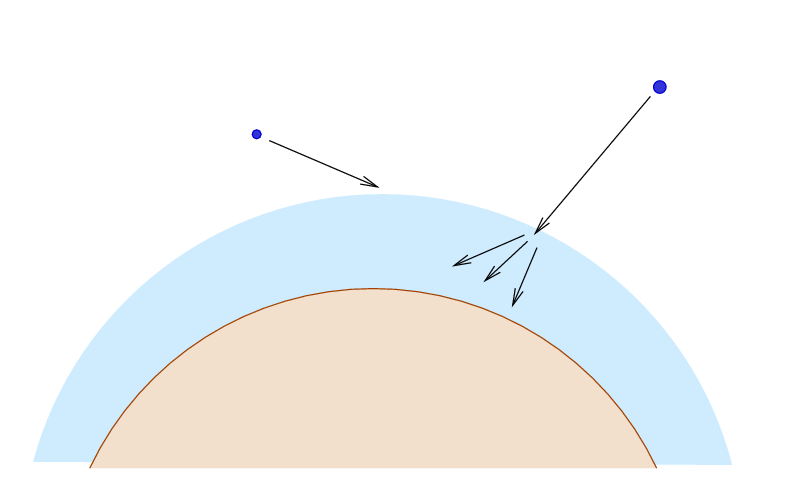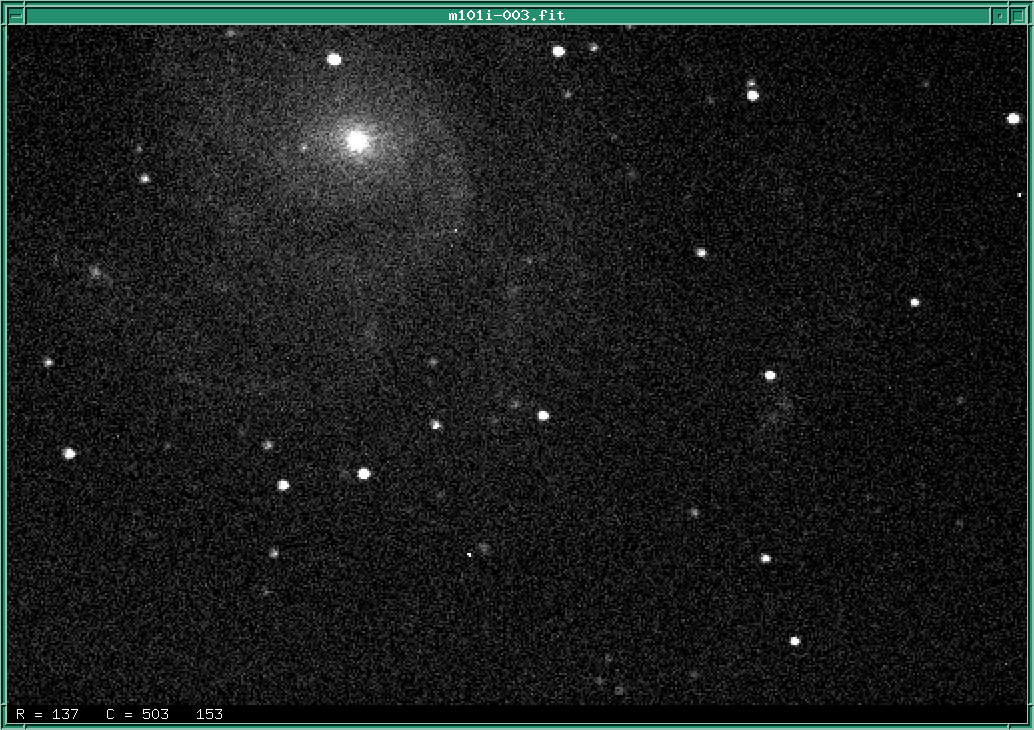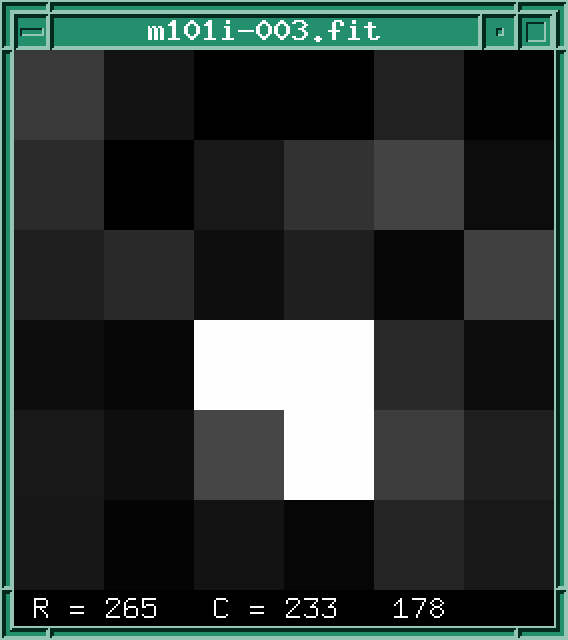
 Copyright © Michael Richmond.
This work is licensed under a Creative Commons License.
Copyright © Michael Richmond.
This work is licensed under a Creative Commons License.
Astronomers are interested in measuring photons which are emitted by distant stars and galaxies, fly for millenia through space, and finally enter our telescopes. These photons can provide a wealth of information about celestial objects, among which are ...
Unfortunately, photons are not the only items flying through space. There are also cosmic rays, which are not massless bits of energy, like photons; instead, cosmic rays are elementary particles such as electrons, protons, and simple nuclei of hydrogen and helium.
When these particles enter the Earth's atmosphere, they smash into particles of air and create a shower of particles and high-energy photons which head toward the ground.

CCDs were designed to capture photons and turn them into electrons, and they do; but it turns out that they also can capture these particles from cosmic-ray showers and turn them into electrons, too. The difference is that
For example, consider the following image of the galaxy M101 (and SN 2013ej) taken with the RIT Observatory 12-inch telescope.

This image shows a big blob (the galaxy) near the top, and a number of smaller blobs (the stars) scattered throughout. Each star is a blob, rather than a pinpoint of light, because the Earth's atmosphere has blurred the light rays so that they form a rough circle several arcseconds across.
But -- look carefully. Do you see any object which looks different?
Yes, down near the bottom center. There's an object which doesn't look very blurry. Let's zoom in on it:

REALLY zoom in on it:

This "object" has very sharp edges. In fact, the electrons from it appear in just 3 adjacent pixels, with no gradual decrease in the neighboring pixels. This is a sign that the chip has been hit by a cosmic ray.
Images we take near sea level don't suffer much from cosmic rays -- they only appear every now and then.
On the other hand, telescopes on mountaintops, high above much of the Earth's atmosphere, are exposed to much greater levels of radiation from space. And telescopes in orbit are even more vulnerable. The Hubble Space Telescope circles the Earth not far from regions of the Earth's magnetic field which are full of high-energy electrons and protons. Cosmic rays can be really annoying in images taken by these instruments. Take a look at this raw image from HST:
Yuck! How can we get rid of those nasty cosmic rays?
Could we, perhaps, take the average of several images?
Suppose that you take a survey of incomes among a set of people who work in the Seattle area.
You want to describe the results of your survey with just a single number. What best represents the typical income of Seattle residents?
Perhaps you could use the mean, also called the average.
A statistic which does a better job of ignoring isolated outliers is the median. It is simply "the number in the middle of the distribution." Here's how to calculate the median of a set by hand:
If there are N elements in a set, then the median is just element number N/2 in the sorted set.
Okay, let's go back to our HST image.
Yuck! There are actually several different kinds of nasty stuff in this image:
We can't do anything about the regions of the chip which were not illuminated, but look what happens when we take the median of just two raw HST images of this field.
What is the "median" of two numbers? The smaller of the two.
That's much better. Most of the cosmic rays are gone, though some single-pixel events are still present. The satellite trail is reduced in prominence, too.
After combining about 20 images of this field (taken in the V and I filters), all the cosmic rays are gone, and the satellite trail has completely disappeared.
 Copyright © Michael Richmond.
This work is licensed under a Creative Commons License.
Copyright © Michael Richmond.
This work is licensed under a Creative Commons License.